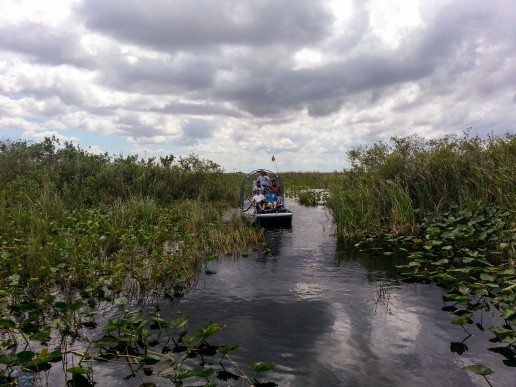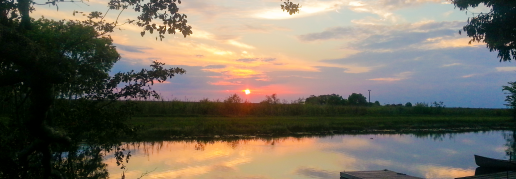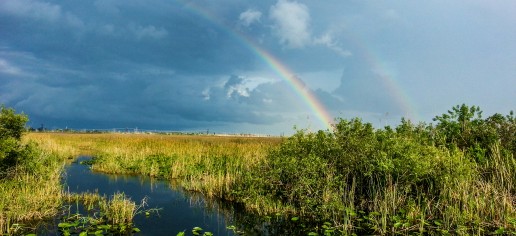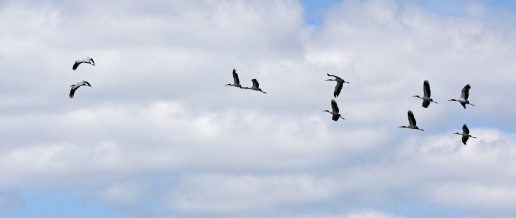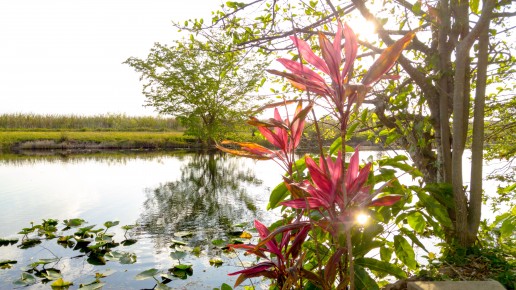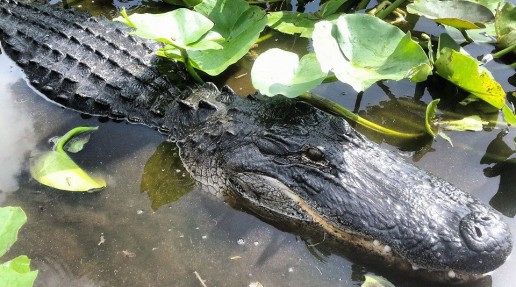Everglades Wet Season, For an Adventure All Your Own
From the River of Grass to the Hardwood Hammock, a noticeable change is now happening in the Florida Everglades, the beginning of the “Wet Season”. From May through November, the Everglades experiences its hottest and most humid temperatures of the year, as well as the highest amount of rainfall. Both the temperatures and humidity percentage average around 90.
The increased rainfall and humidity is partly caused by storms and moisture coming from the Tropics. The Everglades wet season takes place at the same time as the Atlantic Hurricane season, when tropical storms and hurricanes are likely to form. Although these storms pose a threat if they were to make landfall, the National Hurricane Center is very good at tracking them and helping people prepare. Thankfully, South Florida hasn’t seen a major hurricane in over a decade!
Some Everglades Wildlife Like the Rain More
Despite the change in weather during the wet season, it’s actually a great time to take an Everglades airboat tour. Though more scattered now due to the abundance of water, wading birds that nested during the dry season are now raising their young and showing them how to hunt for fish. But, the biggest Florida wildlife star of the season is the American alligator.
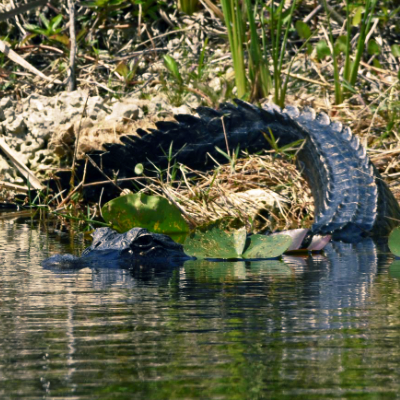
Through the summer months, alligators are the most active animal in the Florida Everglades. Their mating season stars around June, followed shortly by nesting and hatching, with the small roars of baby alligators filling the air by August. It’s during this time that they build their dwellings called “alligator holes”, which hold water collected during this time and help to serve as an oasis to other Everglades wildlife.
Less Wading Birds, But Not Less Animals
Gators aren’t the only cold-blooded creatures that like to play in the rain. While you’re out on an Everglades airboat tour, you’re likely to see a lot of different species of amphibians like frogs and salamanders all along the airboat trails.
The wet season brings an increase of insects to the Everglades, providing them with a feast to snack on. But the frogs can only eat so many of them, so we make sure to provide you with bug screen to keep their leftovers at bay!
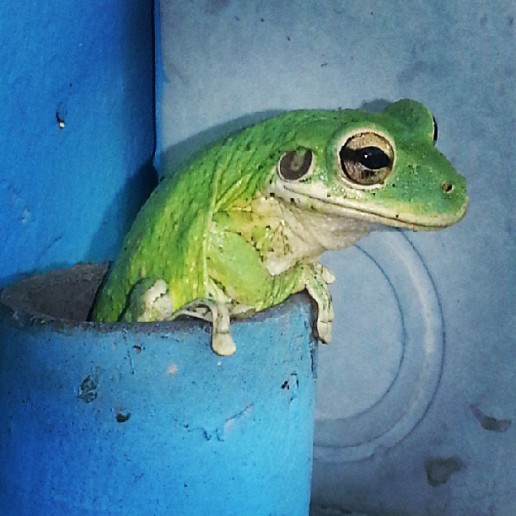
A Private Airboat Tour Feels More Private Now
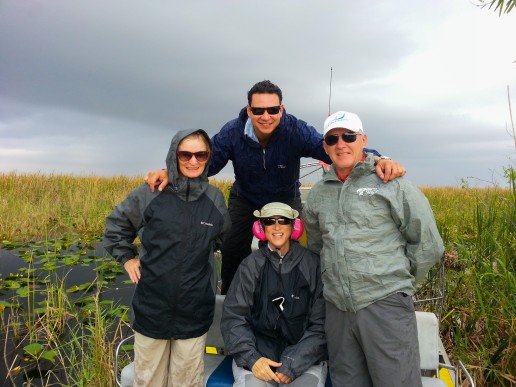
For what the Everglades lacks during the wet season in terms of concentration of wildlife, it makes up for in openness and privacy, making a private airboat tour a much more personal experience. And if you’re a Florida resident that’s been waiting for the snowbirds to clear out so that you can enjoy your own backyard, then your time has come!
Postcards From Heaven: Everglades Sunsets
South Florida is praised for its many beaches, largely because of the glorious sunrises that happen there. Since another ocean isn’t that close by, people enjoying their vacation near Miami or Fort Lauderdale tend not to think much of sunsets. Little do they realize that there is a body of water in South Florida where the sunsets rival the sunrise over the sea, the Everglades’ own River of Grass.
The Science of Florida Sunsets
People often consider Florida Everglades sunsets to look like paintings, and like a real painting, sunsets are the result of combining different materials. Some people think having a lot of dust in the atmosphere enhances sunsets, but having clean air is the biggest factor in making epic sunsets.
Clean air helps scatter violet light wavelengths more than other ones because they are closer to the same size as air molecules, more than red light. A good example of this at work is seeing a blue sky overhead through polarized sunglasses on a clear day: notice how much more bold the blue is?
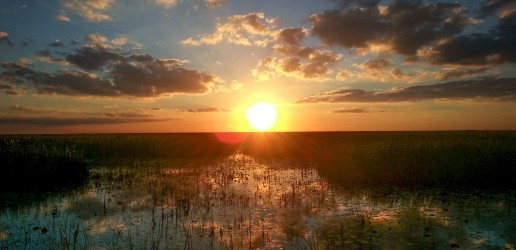
Sunlight takes longer to travel through the atmosphere at sunrise and sunset, and scatters more violet and blue light, showing more orange and red.
The Everglades Wet Season Lends a Hand
In the Everglades, when you move further away from the coast, you definitely get more fresh air than in the city. Out here, far west of cities like Miami, Hollywood, and Fort Lauderdale we also get plenty of another important ingredient for making a beautiful sunset, clouds! The Everglades wet season, which runs from mid-May until November, brings a lot of them in the afternoon, and they help set the stage for many colorful evenings.
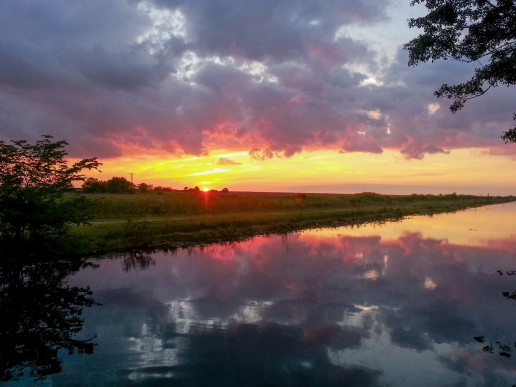
With the air quality in the Florida Everglades being much better than it is in the city, clouds in the lower atmosphere can help add color to sunsets. But the most dazzling colors of an Everglades sunset show up after the sun passes through that layer of clouds. As the sun sinks past the lower atmosphere through the dust and haze, more sunlight reaches higher altitude clouds, producing vivid colors.
Living in this unique corner of Florida, the Gladesmen Culture brings us face to face with a wide variety of Florida wildlife, traveling across miles of different habitats in airboats, and facing extremes of seasonal weather. But at the end of each day, we’re regularly treated to beautiful sunsets that serve as postcards of another day in paradise, a paradise that’s ours to share with you.
2 Seasons in the Everglades?! We Can Explain
The Florida Everglades is a one-of-a-kind environment. But, this is largely due to the fact that Florida is the only state in the continental United States closest to the Tropics. This location makes us both the envy of people living in the blizzard-prone, northern states as well as a coveted winter vacation destination by them.
It’s easy to see why: Florida’s sub-tropical climate lets both residents and visitors alike relax along its many beaches or enjoy the excitement of airboat rides year-round. But the Florida Everglades doesn’t really have four seasons.
Sounds strange, right? We can explain.
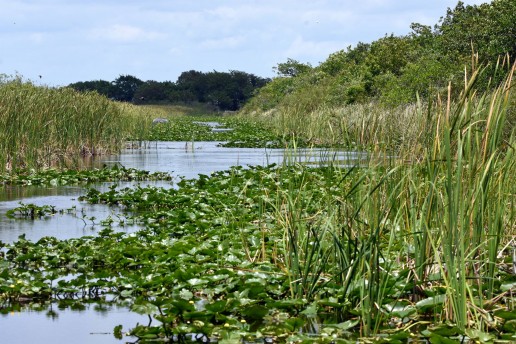
You may recall from science class that the tilt of the earth and its rotation around the sun change the amount of sunlight and heat we get throughout the year, giving us four seasons: spring, summer, autumn, and winter. As we mentioned earlier, Florida’s location being closer to the equator means that it stays warmer on average than other states. Because of Florida being in this fortunate position, the Everglades experiences only two seasons a year.
If you are guessing which ones they are, no, the two seasons are not spring and summer, or even spring and autumn. In fact, differences in sunshine and temperature are not the biggest overall signs of changing seasons in the Everglades. Changes in water levels during the year are what determine which season that the Everglades is currently in.
Everglades Rain Season, Everglades Dry Season
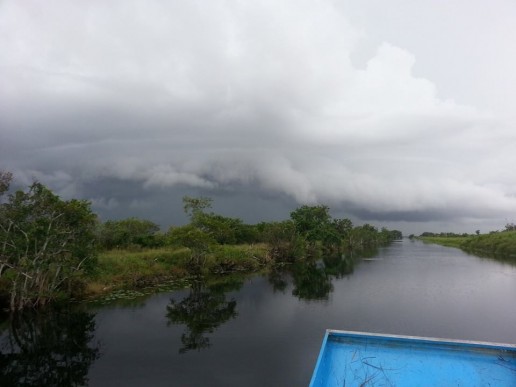
From the middle of May through November, the Everglades experiences heavy rainfall, known as the wet season. Moving into December on through April, there is little to almost no rain, which is known as the dry season. While these two very different seasons sound extreme, the Everglades wildlife treats it like we would a calendar.
The dry season is the peak of bird activity in the Everglades. Migratory birds wait out the cold, northern winds and eventually chase them back home as the temperature rises. The native Florida wading birds use the low water levels to make nests, making dry season and their hatching season one in the same. During the wet season, the alligators, turtles, and frogs nest and hatch, as the wading birds teach their young to hunt.
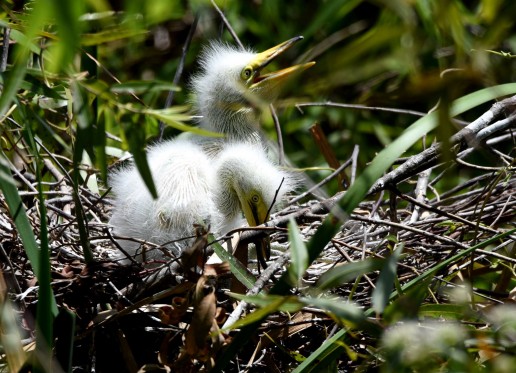
The incredible biodiversity of the Florida Everglades allows you see it thriving at any time of year. With that said, what would you want to see there? You can plan your journey to Mack’s Fish Camp by clicking here.
A Fragile Paradise: Threatened Everglades Wildlife
Here in South Florida, modern life has made the world seem much smaller to people. Unfortunately, the world has literally gotten smaller for several animal species, including those in the Everglades. Their habitat is threatened by human development, as well as longer periods of drought, affecting the water levels that define the Everglades wet and dry seasons. As of January 2017, there are currently 83 species classified as “Federally Endangered” or “Federally Threatened” by the Florida Fish and Wildlife Commission, including:
- Florida Panther
- Everglades snail kite
- Florida scrub-jay
- Florida leafwing butterfly
- American alligator
- Wood stork
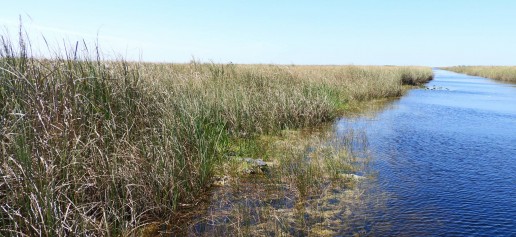
The last two animals mentioned are significant, as both play vital roles in the health of the Everglades’ ecology.
Keystone Everglades Species
Wood storks are one such creature threatened by changes to the Everglades. They are considered to be the “Goldilocks” species of wading birds, because their nesting habits show the health of the Everglades. Wood storks nest during the dry season when water levels are lower, and then feed and train their young as the water and fish population rises.
If the rain season brings too much water, it’s harder for them to find fish to eat. An extended Everglades dry weather season makes their prey scarce.
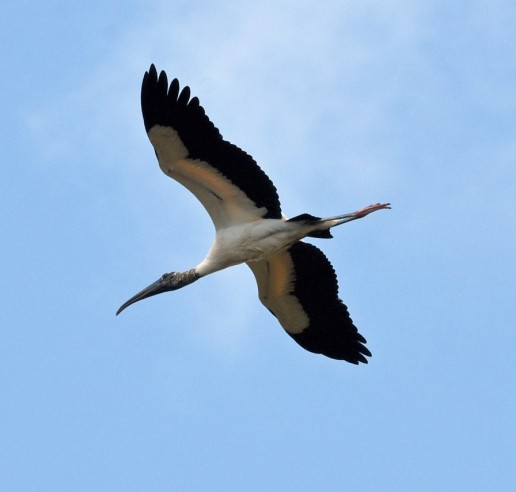
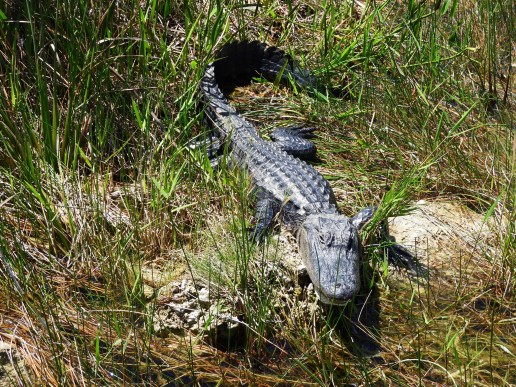
Even the mighty American alligator has seen its numbers decrease, mostly due to human population growth and a demand for their meat and skin. Since being removed from the endangered species list in 1987, their numbers have been improved through farming. Unlike wood storks, alligators play a more direct role in maintaining the environmental health of the Everglades, by making small ponds called alligator holes.
Alligators clear old vegetation when making these holes, which promotes new growth. And once an alligator moves out of one, it can act as a refuge for fish, turtles, birds, and other small animals during the dry season. Even though they have bounced back, they are still listed as “Federally Threatened” due to their similarity of appearance to the American crocodile.

The Florida Everglades is a truly unique place, one that sustains and is sustained by the wide variety of the plants and animals that live here. At Mack’s Fish Camp, appreciation and awareness of the relationship between the many birds, fish, alligators, and the River of Grass is a cornerstone of Gladesmen Culture, and one we’re grateful to share with you. If you’re interested in experiencing the unique beauty of this environment firsthand on one of our Everglades eco tours, please click here.
The Florida Everglades: An Escape From City Living
During your daily commute, you might spy a glance at a stretch of wilderness that seems unexplored when compared to your all-to-familiar routes to and from work. Getting settled into a traffic bottleneck, you recall that patch of wild earth you saw. You wonder not so much about what exploring it would reveal, only how glad you would be to be there at that very moment.
Sure, you may get a break at work, but what you’re after is a real escape from the maze of city living.
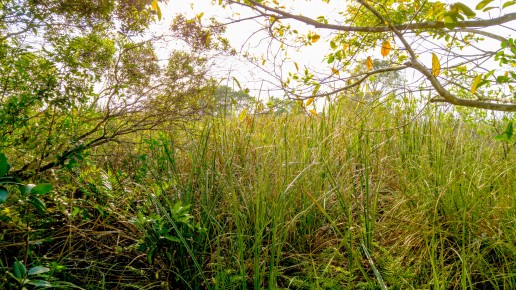
Some would argue that people require constant mental stimulation, but really the opposite is true. Living in a city environment makes a person’s brain work harder to process all of the random sounds and constant movement around them
The burnout of so much focus can make us irritable and impatient, but spending time outdoors can give your brain a much-needed break. Being in nature puts the brain in a type of cruise control called soft fascination, where you’re relaxed and your mind is focused effortlessly.
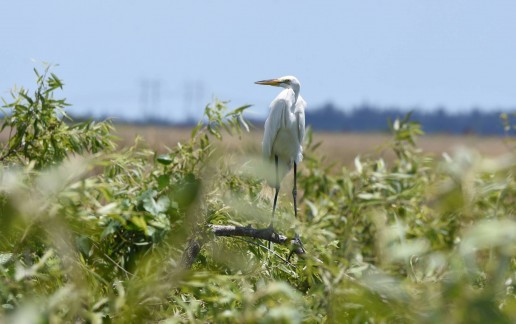
Spending time outdoors, away from the routines of urban living, can inspire you to explore.
The River of Grass, At Your Own Pace
If the saying “familiarity breeds contempt” rings true for you, that could be reason enough to break out of the urban sprawl. Taking a canoe trip through the Florida Everglades is a great way to see different varieties of wildlife and immerse yourself in its vast landscape. Or if that’s not your speed, a private airboat tour across the alligator holes and sawgrass is the thrilling reunion with the outdoors you need.
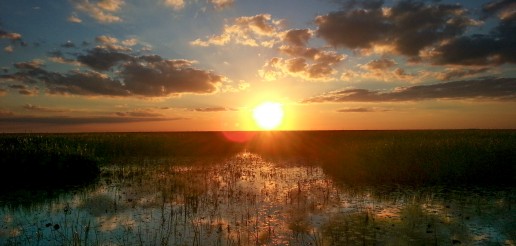
With the hectic pace that modern life is set to, sunrises and sunsets can end up just being bookends to a day. When you visit Mack’s Fish Camp, that stubborn urgency is replaced with a sense of timelessness. Having nature so close to the residential areas of South Florida, the simplicity and stillness of the Everglades can easily be overlooked. If you take the time to see it up close, you’ll discover another world hiding in plain sight.
Never Seen an Alligator Up Close? It’s Time You Have!
While riding on an airboat through the Everglades, you might swear you had just passed a log floating conspicuously out of place among the sawgrass and swamp lilies. A second look will show you that it was definitely not a log. The American alligator has long been a fixture of the Florida Everglades, and one that you’ll have the opportunity to see up close on private airboat tour at Mack’s Fish Camp.
Gator Facts
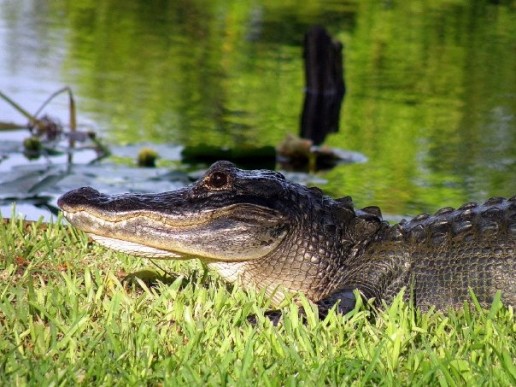
- Alligators usually stay in groups called congregations, and these groups can be seen swimming or basking in the sun. They do this to regulate their body temperature, because they can’t do it themselves.
- Alligators are carnivorous, but they don’t chew their food. They swallow their prey whole, relying on their sharp teeth and strong jaws to seize prey.
- Those sharp teeth of theirs are actually hollow and often break. But, they can just grow new ones!
Given their size and toughness, you would think it’s a given that alligators are the apex predators of the Everglades, but they’re not. That title now belongs to the invasive Burmese python. However, alligators are a keystone species, playing a critical role in the ecosystem of the Everglades.
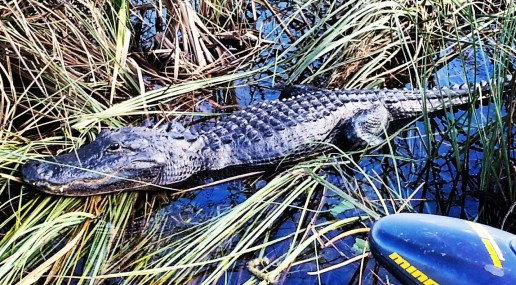
They make watery burrows called “alligator holes” in the muck and limestone bedrock. They do this to keep cool and attract prey, but these holes retain water collected through the rainy season (May to November), which retain rainwater and act as a refuge and oasis for other wildlife during the dry season (October to April).
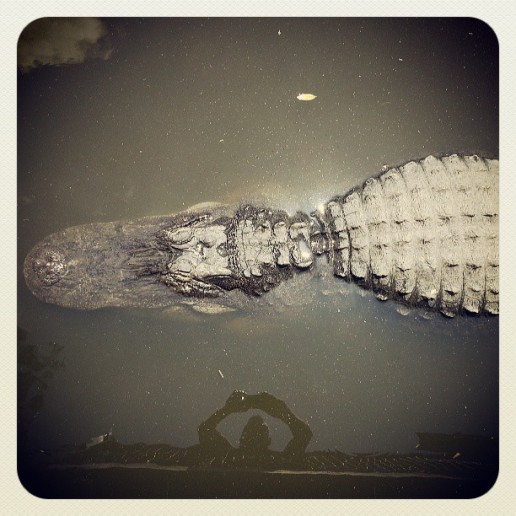
Alligators certainly are impressive creatures to behold, and you should always keep your personal safety in mind should you encounter one.
- Don’t ever feed them, because doing so can make them aggressive and worse, associate people with food.
- If you do happen to find yourself near an alligator, make sure that you’re at a safe distance (between 20 and 30 feet) from it, and back away slowly if you suddenly find yourself closer than that to one.
While there is plenty of unique wildlife to been seen in South Florida, the most fun and safest way to behold these animals is by taking a private airboat tour. The most priceless souvenirs you can get in Florida are the memories of an airboat ride through the Everglades.

